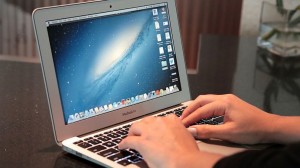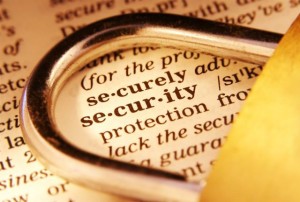Solution for Protecting Your Mac Data from Any Damage
Macs are Vulnerable, too
 Due to the potential vulnerabilities of Mac OS X, Macintosh computer systems are more susceptible to security breaches and threats than ever before. Many Mac users falsely believe that they are immune to virus and hacker attacks. It’s true that Macs are generally affected less by intrusions than PCs, but that’s only because Macintosh makes up such a small percentage of the market. In reality, with the growing number of viruses in existence and the increasing number of hackers on the Internet, there isn’t a computer in the world that is exempt from these kinds of malicious acts.
Due to the potential vulnerabilities of Mac OS X, Macintosh computer systems are more susceptible to security breaches and threats than ever before. Many Mac users falsely believe that they are immune to virus and hacker attacks. It’s true that Macs are generally affected less by intrusions than PCs, but that’s only because Macintosh makes up such a small percentage of the market. In reality, with the growing number of viruses in existence and the increasing number of hackers on the Internet, there isn’t a computer in the world that is exempt from these kinds of malicious acts.
This article shows you 3 big damages which may do harm to your computer and offer you ways to protect Mac data.
Viruses
Though most of the 55,000 known viruses today are specifically written to affect Wintel systems, Macintosh users are not invulnerable to this ever growing security risk. Despite the relative rarity of Mac-infecting viruses, users still need to be cautious about taking necessary precautions to protect their systems.
Some viruses are programmed specifically to damage the data on the computer by corrupting programs, deleting files, or even erasing the entire hard disk. However, many of the currently known Macintosh viruses are not designed to do any damage. They simply replicate themselves and may display messages. However, because of bugs within the virus, the system may behave erratically or crash unexpectedly.
There are several factors that introduce additional security threats to Macintosh computers. First of all, if a PC emulator is used on your Mac to run Windows, the system is running the risk of infection by any virus or worm that targets Outlook for Windows or any other Windows software. Also, high speed internet connections (such as DSL and cable) increase the danger of virus and hacker intrusions. In addition, macro viruses have brought virus activity to the realm of specific applications rather than specific platforms. If you share a network with users of other operating systems, you may unknowingly spread Windows based viruses, putting your servers and/or co-workers at risk.
Protect yourself from potential virus-related disaster by following these easy steps:
1. Avoid downloading software from unknown, suspicious or untrustworthy sites.
2. Never open e-mail attachments from unknown senders.
3. Immediately delete junk mail, chain letters and other e-mail messages with questionable subject lines.
4. Update your antivirus software regularly.
5. Back-up your files on a regular basis.
6. When in doubt, be safe and do not open, download, or execute any files or email attachments that are unfamiliar.
7. Whenever possible, declare your computer software and data on your home owners or business property insurance policy.
Hackers
 By maliciously surfing the Internet for vulnerabilities and open ports, hackers can bypass passwords and literally break into your computer, regardless of what platform you’re running. These cyber intruders are especially dangerous to computer users because they can intentionally copy or steal confidential information such as: social security numbers, financial information and other personal data. They can also destroy application files, plant viruses or even take over your computer to launch attacks on other users.
By maliciously surfing the Internet for vulnerabilities and open ports, hackers can bypass passwords and literally break into your computer, regardless of what platform you’re running. These cyber intruders are especially dangerous to computer users because they can intentionally copy or steal confidential information such as: social security numbers, financial information and other personal data. They can also destroy application files, plant viruses or even take over your computer to launch attacks on other users.
Unfortunately, hackers pose dangerous threats to any computer that has online access. Macs are no exception. As a matter of fact, the newest Mac operating system appears to be quite attractive to hackers who enjoy a good challenge. Because Mac OS X is UNIX-based, some hackers may understand it more than they would older versions of Mac OS. Thus, it is extremely important to take security precautions to protect your Mac from potential hacking.
In order to properly protect your Mac from malicious attack, you should follow these guidelines:
1. Install personal firewall software that will detect and prevent intruders from entering your program.
2. Always keep up to date with patches and security fixes from computer vendors to protect against software holes.
3. Be careful to select good passwords. Choose a different password for each site, keep them secret and change them often.
4. Users with sensitive data should encrypt all of their files.
5. Back up data often.
Hard Drive Crashes
 Whether using a PC or a Mac, for business or pleasure, valuable data should be protected from impending harm caused by viruses, hackers, power surges, human error, natural disasters and more. The most important step in keeping data safe from being deleted, stolen, lost or damaged is to back-up regularly. By doing so, if something should happen to threaten the integrity of the electronic information, users will still have a recent copy of all important files, emails, databases, spreadsheets and more.
Whether using a PC or a Mac, for business or pleasure, valuable data should be protected from impending harm caused by viruses, hackers, power surges, human error, natural disasters and more. The most important step in keeping data safe from being deleted, stolen, lost or damaged is to back-up regularly. By doing so, if something should happen to threaten the integrity of the electronic information, users will still have a recent copy of all important files, emails, databases, spreadsheets and more.
Follow these simple steps if and when a data-disaster happens:
1. Turn the computer off. If a hard drive is making any sort of unusual sounds (including the dreaded clicking) it is imperative that the computer is shut down immediately to avoid further damage to the data. Rebooting or continuing to let a failing drive run can literally make it self-destruct.
2. Never attempt to fix the problem yourself. By opening or operating on a hard drive without the proper knowledge, tools or environment, one could potentially cause more problems for the drive and the data, resulting in less of a chance for an affordable, successful recovery.
3. Be wary of do-it-yourself data recovery software. In most cases, users have only one chance to recover data. Though purchasing at-home recovery programs can seem like a less expensive alternative, it can be a dangerous one.
4. Research and call a professional. Note: Researching the company prior to sending in the failed drive is imperative to getting a successful result. Just because a company claims to have the capability to handle your data doesn’t mean that they really do. Or you may try to read this post or go to uFlysoft studio to get the details about data recovery.
